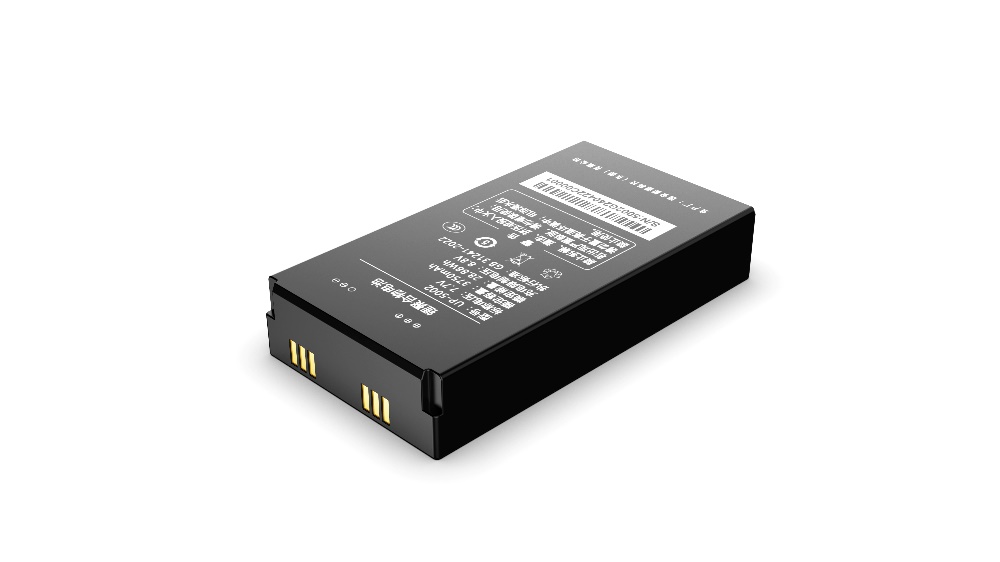Explosion-proof battery
----Guoan Energy Technology (Dongguan) Co., Ltd. R&D Center
I. Certification Nature and Scope of Application
1. Coal Mine Safety Certification: Nature: It is the abbreviation of coal mine safety certification, which is a mandatory certification for equipment used underground in coal mines. - Scope of application: It mainly applies to electrical equipment, non-electrical equipment and related products used underground in coal mines. These devices usually need to operate in flammable and explosive environments with gas and dust, and have extremely high safety requirements. For example, large-scale equipment such as coal mining machines, tunneling machines, ventilators, and hoisting machines used underground in coal mines, as well as various sensors and explosion-proof lamps and other small equipment, need to pass coal mine safety certification before they can be used underground in coal mines. 
2. Intrinsic Safety Certification: Nature: Intrinsic safety certification is a certification based on the inherent safety characteristics of the equipment. Scope of application: Relatively wide, not only in the coal mining industry, but also in industries with flammable and explosive hazards such as petrochemicals, pharmaceuticals, and metallurgy. It mainly targets electrical equipment that will not generate sparks or heat effects sufficient to ignite surrounding explosive mixtures under normal working and fault conditions. For example, intrinsically safe instruments used in the automated control systems of chemical enterprises, and intrinsically safe communication equipment used on oil drilling platforms.

II. Certification Standards and Requirements
1. Coal Mine Safety Certification: The standards are strict and complex, covering many aspects such as electrical safety, mechanical safety, explosion-proof performance, and protection level. For example, the explosion-proof requirements for electrical equipment are very high, and it must be able to prevent the danger of gas and coal dust explosions. At the same time, it also requires the equipment to have good corrosion resistance, impact resistance, etc., to adapt to the harsh working environment underground in coal mines. The certification process usually includes product technical document review, product sampling inspection, and on-site audit. In the technical document review, detailed product design drawings, instruction manuals, and enterprise standards need to be provided. Product sampling inspection is to conduct strict tests on the performance indicators of the products at designated testing institutions to ensure that they meet the coal mine safety certification standards. On-site audits mainly audit the production conditions and quality management systems of the production enterprises to ensure the stability and reliability of product quality.
2. Intrinsic Safety Certification: It focuses on the intrinsic safety performance of the equipment, that is, by limiting the energy release of the equipment, it will not cause ignition of the surrounding explosive environment under any circumstances. This mainly involves strict requirements on the circuit design, electrical parameters, and structural layout of the equipment. For example, the circuits of intrinsically safe equipment usually use low-voltage and low-current designs, and through special isolation, current limiting, and voltage limiting measures, it is ensured that even in the event of a malfunction, no dangerous sparks or heat effects will be generated. During the certification process, the intrinsic safety performance of the equipment needs to be comprehensively evaluated, including circuit analysis and calculation, spark test, and thermal effect test. At the same time, it also requires production enterprises to establish a sound intrinsic safety quality management system to ensure that the intrinsic safety performance of the products is effectively controlled during production.
III. Certification Mark and Authority
1. Coal Mine Safety Certification Mark: The certification process is relatively cumbersome, generally including application, product inspection, on-site audit, and certification. It is certified by certification bodies authorized by the National Coal Mine Safety Administration. These certification bodies usually have professional technical personnel and testing equipment, and can conduct comprehensive testing and evaluation of coal mine equipment. It is an important mark for coal mine equipment to legally enter the underground coal mine market. Products with the coal mine safety certification mark indicate that they have undergone strict review and testing and meet the relevant standards and requirements for coal mine safety. When coal mine enterprises purchase equipment, the coal mine safety certification mark is one of the necessary conditions.
2. Intrinsic Safety Certification Mark: The certification process is relatively simple, mainly including application, product testing, and audit and certification. It can be certified by nationally accredited third-party certification bodies. These institutions have rich experience and professional technical capabilities in intrinsic safety certification. It is also an important mark for intrinsically safe equipment, representing that the equipment meets the relevant standards in terms of intrinsic safety. In industries with flammable and explosive hazards, the intrinsic safety certification mark is one of the important bases for users to choose equipment.
IV. Main Corresponding Locations
Zone 0: Environments where explosive gas mixtures continuously or persistently occur. Typical locations include the interior spaces of containers or tanks containing permanently open or closed flammable gases or liquids, and permanently operating fixed pumping stations for flammable gases or liquids. 1 Zone 1: Environments where explosive gas mixtures may occur during normal operation. For example, in the production equipment area of petrochemical enterprises, areas where explosive gases may occur due to slight leakage of equipment or temporary abnormalities during operation; loading and unloading sites of tank trucks and oil tanks containing flammable liquids; flammable gas compressor rooms, etc. 2 Zone 2: Environments where explosive gas mixtures are unlikely to occur during normal operation, and even if they do occur, they only exist for a short time. For example, auxiliary production areas and warehouse areas of petrochemical enterprises; areas near non-explosion-proof electrical equipment in the storage tank area of flammable liquids, where explosive gases generally do not occur under normal circumstances, but may occur for a short time under special circumstances such as equipment maintenance and leakage.
V. Explosion-Proof Type
Class 1 (Coal mines, underground electrical equipment): “Ex d I”: Explosion-proof type, used in coal mines. “Ex ia I”: Intrinsic safety type, used in coal mines. “MA”: Coal mine safety mark, a mandatory safety mark for coal mine products required by the National Coal Mine Safety Administration, which usually appears simultaneously with the above explosion-proof marks.
Class 2 (All other explosive gas environments except coal mines and underground): “Ex d IIA T3”: Explosion-proof type, suitable for IIA class explosive gas environments, with a maximum surface temperature not exceeding 200℃. “Ex d IIB T4”: Explosion-proof type, suitable for IIB class explosive gas environments, with a maximum surface temperature not exceeding 135℃. “Ex d IIC T6”: Explosion-proof type, suitable for IIC class explosive gas environments, with a maximum surface temperature not exceeding 85℃. “Ex e II T3”: Increased safety type, used in II class explosive gas environments, with a maximum surface temperature not exceeding 200℃. “Ex nA II T3”: Non-sparking type, suitable for II class explosive gas environments, with a maximum surface temperature not exceeding 200℃.
Class 3 (Explosive dust environments except coal mines): "Ex tD A21 IP65 T135℃": Dust explosion-proof type, suitable for Zone 21 combustible dust environments, protection level IP65, maximum surface temperature not exceeding 135℃. "Ex tD B21 IP65 T125℃": Dust explosion-proof type, suitable for Zone 21 combustible dust environments (different dust characteristics), protection level IP65, maximum surface temperature not exceeding 125℃. "Ex iaD 20 IP65 T100℃": Intrinsic safety type dust explosion-proof, suitable for specific explosive dust environments, protection level IP65, maximum surface temperature not exceeding 100℃.
|
T1 |
T2 |
T3 |
T4 |
T5 |
T6 |
|
450℃ |
300℃ |
200℃ |
135℃ |
100℃ |
85℃ |
VI. Core Technology Features
Explosion-proof structural design. Explosion-proof batteries use multiple explosion-proof technologies, including explosion-proof circuit design, explosion-proof battery cell structure, and nanometer-level lithium-ion storage grid technology, effectively isolating oxygen from direct contact with lithium metal, preventing explosion risks caused by shell breakage. Some products integrate runaway thermal protection technology to systematically solve safety hazards under extreme operating conditions, significantly improving safety and reliability.
Multiple protection mechanisms
During charging and discharging, the battery uses dual voltage and current limits to prevent lithium-ion aggregation and crystallization risks; the shell material has compressive strength and high-temperature resistance characteristics, and the heat dissipation design is optimized to ensure stable operation in complex underground environments.
Technical Reference:
GB 25286.1-2010 Non-electrical equipment for explosive atmospheres
GB 25286.2-2010 Non-electrical equipment for explosive atmospheres
GB 25286.3-2010 Non-electrical equipment for explosive atmospheres
GB 25286.5-2010 Non-electrical equipment for explosive atmospheres
GB 25286.6-2010 Non-electrical equipment for explosive atmospheres
GB 25286.8-2010 Non-electrical equipment for explosive atmospheres
GB 12476.1-2000 Electrical equipment for combustible dust atmospheres
GB 12476.4-2010 Electrical equipment for combustible dust atmospheres
GB 12476.6-2010 Electrical equipment for combustible dust atmospheres
GB 12476.7-2010 Electrical equipment for combustible dust atmospheres
GB 3836.17-2007 Electrical equipment for explosive gas atmospheres
GB 3836.18-2010 Explosive atmospheres Part 18
GB 3836.19-2010 Explosive atmospheres Part 19
GB 3836.20-2010 Explosive atmospheres Part 20
GB 19518.1-2004 Electrical equipment for explosive gas atmospheres
GB 3836.2-2010 Explosive atmospheres Part 2
GB 3836.3-2010 Explosive atmospheres Part 3
GB 3836.4-2010 Explosive atmospheres Part 4
GB 3836.5-2004 Electrical equipment for explosive gas atmospheres
GB 3836.6-2004 Electrical equipment for explosive gas atmospheres
GB 3836.7-2004 Electrical equipment for explosive gas atmospheres
GB 3836.8-2003 Electrical equipment for explosive gas atmospheres
GB 3836.9-2006 Electrical equipment for explosive gas atmospheres
Service Hotline
Email:zhangjie@ganeny.com
Website:www.ganeny.com
Address: No. 79, Shayuan Road, Shabu, Dalang Town, Dongguan City, Guangdong Province, China

Official Public Account
Privacy Policy | SEO | Support:300.cn
